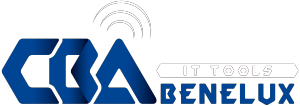
Description
CBA, Computer Business Applications was founded in January 1999.
CBA works in a collaborative way with partners and their customers to produce the best results for all.
They select products which are complementary to each other and bring these together as a IT tooling distributor or reseller, depending on the contract. By promotion online en offline via google, webinars, workshops, tradeshows, competence meetings for and/or resellers customers, etc. CBA offers training and no nonsense support.
CBA offers IT infrastructure, applications, Servers, desktop/Smartphone (cyber,secuirty) Management Tooling en services, like GDPR / AVG advise and Analitics, helpdesks/faciltyDesk setup.
Source: https://www.cbabenelux.com/pagina+18/about-us.html
CBA works in a collaborative way with partners and their customers to produce the best results for all.
They select products which are complementary to each other and bring these together as a IT tooling distributor or reseller, depending on the contract. By promotion online en offline via google, webinars, workshops, tradeshows, competence meetings for and/or resellers customers, etc. CBA offers training and no nonsense support.
CBA offers IT infrastructure, applications, Servers, desktop/Smartphone (cyber,secuirty) Management Tooling en services, like GDPR / AVG advise and Analitics, helpdesks/faciltyDesk setup.
Source: https://www.cbabenelux.com/pagina+18/about-us.html

